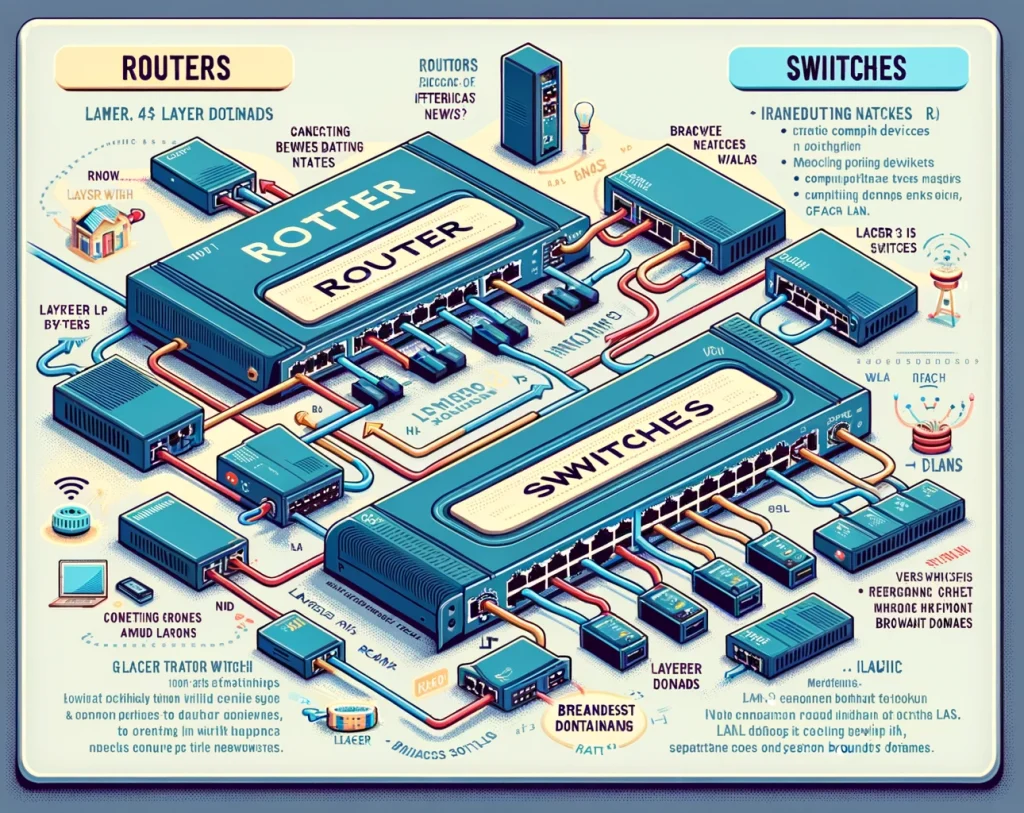In the intricate world of networking, understanding the distinctions between routers and switches is fundamental. According to TechTarget, a router is essentially the gatekeeper of network traffic, determining the most efficient route for data packets to reach their destination. It acts as the gateway between distinct networks, utilizing routing tables to make informed decisions.

Switches, on the other hand, serve as the connective tissue within a network, linking various devices and managing the flow of traffic to ensure efficient communication without collisions. Both devices are intelligent, with routers specializing in quick routing decisions for external traffic and Layer 3 switches excelling in routing internal LAN traffic more rapidly.
Despite their similarities, routers and switches fulfill distinct roles. Routers operate at the Network layer (Layer 3) of the OSI model, routing data to IP addresses, while most switches function at the Data Link layer (Layer 2), directing data to MAC addresses. However, switches equipped with routing capabilities—often referred to as Layer 3 switches—blur these lines, offering both high-speed internal routing and basic connectivity.
A critical feature distinguishing routers is their ability to perform Network Address Translation (NAT), concealing LAN devices from external networks. Routers frequently double as DHCP servers, automatically assigning IP addresses to new network devices and providing essential firewall protections against unauthorized access.
One fundamental difference lies in how routers and switches handle broadcast domains: routers confine broadcast domains to individual ports, enhancing network security and efficiency, whereas switches traditionally operate within a single broadcast domain, unless VLAN technology is employed to create segmented networks.
Understanding these nuances not only clarifies the roles of routers and switches in our networks but also guides us in optimizing our digital ecosystems for better performance, security, and connectivity.






